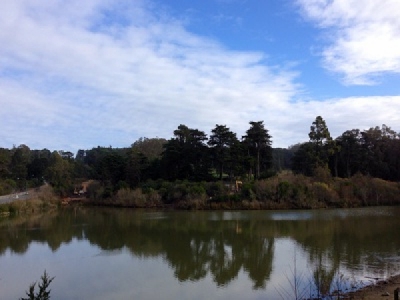
Posted on July 21, 2016
By Despo Baltoumas, Watertown Daily Times
Removing the accumulated sediment in Mountain View Lake –– a problem that is contributing to the growth of invasive Eurasian milfoil in the waterway –– is expected to cost roughly $2.5 million, the president of the environmental consulting firm overseeing the project told the Bellmont Town Board last week.
EcoLogic President Elizabeth Moran said removing the sediment would cost $21 per ton of material taken from the lake bed. The project involves 100,000 to 120,000 cubic yards of material taken from 74 acres of the lake bottom, she said.
A total of 124 acres will be physically disturbed by the project, she said.
Bellmont has already spent in excess of $200,000 on the proposed dredging project, including paying for a bathymetric study that measured the lake’s depth and located the worst areas of sedimentation, and the Mountain View Association has spent thousands more in an effort to control the milfoil, which can choke waterways and make them unnavigable.
The town did receive $70,000 through the state Department of State’s Local Waterfront Revitalization Program for an engineering study on the feasibility of dredging Mountain View and Indian lakes
Moran said Wednesday that the town and the consulting firm are looking into funding that will cover as much as 75 percent of the total project cost.
Among the next steps for the project will be the town’s assumption of lead agency status under the State Environmental Quality Review Act. The review involves a process to systematically consider environmental factors early in the planning stages of a project and may be undertaken by local, regional or state agencies.
Some of the issues likely to be raised through the review have already been examined, Moran noted. Disposal of the soil taken from the lake bottom will be done in two ways, Moran said. Sandy material taken primarily from the bed of the channel connecting the two lakes will be recycled through the town Highway Department and used to de-ice roads. The “muckier material” –– made up of the clay-like soil that is washed into the lake from the surrounding mountains, will be disposed of in an old gravel pit in the town, Moran said.
Disposing of the dredged material locally will address another issue expected to be raised in the review process –- the amount of road traffic the project will generate. “There will be no substantial traffic to the area” because of the project, said Moran.
“This helps in a lot of ways … cost saving or cost avoidance,” she added.
She also said that the project will not release methane gas, nor will it cause any air pollution. “There will be noise exceeding the ambient level,” Moran said, noting that the plan calls for the contractors to work 12-hour shifts.
Moran described the project as hydraulic dredging, which she likened to a vacuum cleaner on a barge that will stir up the sediment and suck it into geotubes. “The geotube is like big permeable sausages,” she said.
The water sucked up with the sediment will be filtered and then redirected back to the lake by a second piping system, she said.
The project is expected to take one full construction season, Moran said in response to a question from Deputy Supervisor Wayne Rogers.
EcoLogic officials have been meeting with representatives of the federal and state agencies that will be overseeing various aspects of the work, including the state Department of Environmental Conservation and the federal Environmental Protection Agency.
“We have been very careful in meeting with the agencies. The DEC and the EPA are at the table,” Moran said. “We think we are bringing them along and will have a positive feedback when we give them the application.”
“It is a work in progress,” said Supervisor H. Bruce Russell.
Source: Watertown Daily Times





